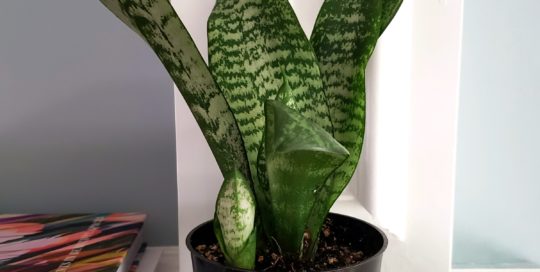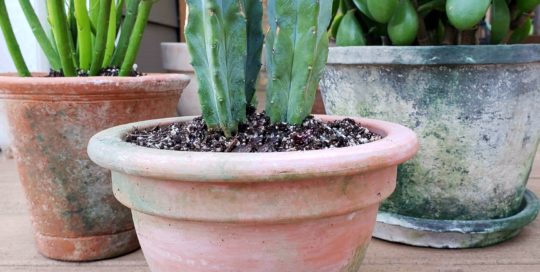How To Help Your Houseplants Survive A Cold Winter
Views: 537

It’s midwinter here in Chicago; the real dog days. For months now green grass, blue skies, and lush landscaping have been replaced by bare cement and gray skies. If you live in the northern hemisphere, and are mesmerized by your houseplants lately, you are not alone. Our eyes are green-starved!
Plants Have Winter Blues Too
Plants have their own version of winter blues. Throughout the year sunlight and radiant heat fortify indoor plants, but not as much in winter. Shorter days mean less light, and colder temperatures mean furnace heat, which saps humidity. Changing conditions can cause root rot and invite pests. Here’s how to help your plants survive a cold winter without taking a hit.
Adjust Watering Frequency
The watering routine that worked in summer will saturate your plants in winter. This is because when sunlight decreases the rate of photosynthesis slows down, so your plant requires less water. Decrease both the amount and frequency of water. The best way to determine when to water is to monitor the soil. You can use a meter, or just feel for dryness with your hand.
Monitor Humidity
The unnatural combination of less light with more furnace heat can throw your plant a curveball. Radiators and heat vents reduce humidity and dry out soil, but if you water more, you may cause root rot – it’s a delicate balance. Boost humidity by placing your plant on a tray of wet pebbles, using a humidifier, or grouping plants together in a small space. Plants release moisture from their leaves, so when grouped together, they create a more humid microclimate.
Reevaluate Your Houseplant’s Location
Do you feel a cold draft near your window, or see a layer of frost on the glass? No matter how great it looks, the perfect window sill nook may be too cold for your plant in winter. Make sure to move delicate foliage or heat-loving plants away from drafty windows or doors.
Follow The Light
During winter the sun travels lower on the horizon, so if that patch of direct sunlight coming through your window seems smaller, you’re not imagining it. Relocate your plant to a brighter spot if necessary and make sure to keep both leaf surfaces and windows clean. A thin layer of dust will block precious light.
Also, take advantage of winter sunlight. It’s much more gentle than hot summer sun and won’t burn your plants. I move my monstera to a south-facing window from January – April and it always thrives.
Hold Off On The Fertilizer
Avoid fertilizing your plants during winter. Plants naturally rest during cooler darker months, so wait for the growing season (spring and summer) to fertilize. This will prevent fertilizer burn and allow your plant a dormancy period over winter, when its nutritional needs are minimal. Of course, if your plant has new shoots, or is under grow lights, you can decide whether or not to give it this rest.
Rest Brings Renewal
With a little TLC our plants can not only survive a long winter, but quietly gather energy for spring. Pausing is good for both our plants and ourselves; think of it as a way to refuel. Before you know it, birds will chirp, windowsills will warm up, and sunlight will brighten the northern hemisphere again. Hang in there. Nature gives us so much to look forward to.
Meet Paula Palma
Paula has a teaching background in pilates, yoga, and meditation. She is currently studying biology as a prerequisite for further education. One of her favorite…
Paula's Recent Posts

What To Do When You Inherit A Houseplant






